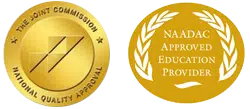A combination of stressful life events and poor coping skills may impact your risk of substance abuse and addiction, this is because stress is a well-known risk factor in both the development of addiction and relapse. Meditation is one way to help reduce stress levels. It can provide a sense of calm and calm and help you focus your attention on something other than problems. If you’re unfamiliar to the technique, it may seem awkward getting started, but there are a few simple steps to help.
The Meaning and Purpose of Meditation
Meditation is a mental exercise that helps you redirect your focus and attention. Just like exercise trains your body, meditation trains your mind. The two most common forms of meditation are concentration meditation and mindfulness meditation.
With concentration meditation, you focus your thoughts on a single point. This could be concentration on your breathing or staring at an object. The goal is to refocus your consciousness. With mindfulness meditation, you become aware of wandering thoughts. Not to change those thoughts, but with the goal of seeing how your thoughts and feelings appear in patterns.
How Do You Meditate?
Meditation is an easy practice. It doesn’t require any special equipment, and you can do it anywhere. Simply relax and follow a few steps.
Find a Comfortable Spot
Choose a place away from distractions. Turn off the TV and find a place where you can be alone for a few minutes. Sit in the floor on a cushion or even choose a straight-back chair with your feet flat on the floor. Pay attention to your posture so that your body is relaxed, and you feel at ease.
Concentrate on Your Breathing
Sit with your eyes open or closed, which ever you’re most comfortable with. Follow your breath. Deeply inhale slowly through your nose with your mouth closed. Count to three and then hold your breath for two seconds. Slowly exhale through your mouth for a count of four. This focused breathing can slow your heart and make you more relaxed. Continue to control your breath for five to seven minutes, or through the duration of your meditation.
Note Your Thoughts and Feelings
As you remain focused on your breathing, try to push out any intruding thoughts or feelings. It may help to stare at a stationary object, for example, a candle flame.
Follow a Routine
Establish a meditation routine. You may prefer to meditate at the end of the day, or you may meditate several times during the day as you notice intrusive thoughts. The goal is to stay calm and reduce any stress that might result in a relapse.
At Baystate Recovery Center, we offer a wide range of treatment options to help you through your substance addiction. If you or a loved one are ready to get started on the path to recovery, contact us today at (855) 887-6237 or fill out a form online, and we will get back to you as soon as possible.
Baystate Recovery Center, a clinically Infused 12-Step Treatment Center for Drug and Alcohol Addiction, was founded by two partners in addiction treatment services, John Checchi and Michael Wilson.



